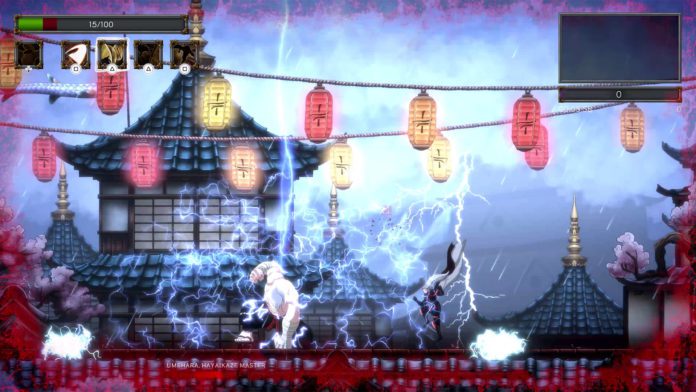PREVIEW : Summum Aeterna (PC)
Releases of the same franchise in such a short period always result in a comparison between the two titles among game critics. So, for this text, I’ll start by warning you that I didn’t get to play Aeterna Noctis because I was introduced to this universe through Summum Aeternum. However, to provide the right contextualization, I conducted extensive research on the earlier work, and in the end, I discovered the fundamental difference between the two: Aeterna lacked the cliches associated with roguelikes, instead opting for a Metroidvania experience with levels designed by the developers and shared by all players.

This premise differs from Summum, which follows the path of procedural environment generation and challenges the player to reach the end of worlds created from seeds to collect better rewards and be able to create scenarios with more treasures and gameplay modifiers – the great roguelike classic, in the end.
In this case, it’s easier to think of Summum as a different approach to Aeterna’s gothic themes and structure, being much more of an infinite game that values the player’s desire to keep looking for mods that help him on his journey than something that has a fixed experience for everyone, even if without linearity.

Summum’s beat subsequently begins to resemble the well-known “betting” structure. The player may choose to create a quieter world for an adventure, with weaker foes and bosses and less reward, or they may opt to take more damage and injure opponents less to acquire better treasures – in the end, the player is the one who balances the game. its risk-reward ratio about the security’s options
The problem is that this can both attract and repel players. See, a roguelike is popular among indie game fans, but it may be one of the most difficult genres to convert someone who doesn’t like it because everything looks so different with each play.
Interesting combat but no room for change
After explaining the roguelike and the many reasons why a player might not use it, it is vital to focus on what Summun does differently to try to remedy this situation. It’s the convenience of fixed modifiers in this scenario.
It is normal for the player to find different words when exploring one of the worlds generated by the numerous seeds gathered in their games. These weapons are fixed and have various perks that can drastically affect the character’s connection with the quest numbers and modifiers.
As an example, after less than 40 minutes of gameplay, I discovered a blade that fixedly increased my damage, allowing me to feel safer exploring realms with higher enemy damage.
Furthermore, the game has an intriguing combat system, which, according to my interpretation, places an invisible stamina bar on each enemy, and depending on how much the player manages to hit that enemy in a given time window, it can either cancel the attacks and leave you in a brief state of confusion, allowing attacks with no possible consequences.
This is where the game’s gameplay flow comes into play: attack, use the dash (by default set to one of the controller’s triggers), and make good use of the spells, which can also be found and changed on each journey – but the caveat is that many of them, at least in my six hours with the title, seems to be focused on spatial movement, which bothers me because the game’s structure doesn’t seem to support these moments, at least in its early access status.

Poor visuals, optimization fails on computers
As a game that values fast and accurate combat, 60 FPS becomes important – but on PC, I was surprised at how poorly optimised the title is, using nearly 100 per cent of the memory of my video card, a Radeon RX 570, in addition to at least 705 of the processor, all without presenting great visuals or anything like that.
See, the Dark King’s model, the protagonist, has fluid motions and a cover movement quite similar to Alucard’s from the classic Castlevania Symphony of the Night. In contrast to the gothic tones, the environments lack liveliness and many illumination points that would justify such a possible usage of the CPU and GPU.

On a console, this might not be such a big deal, but I assume that the majority of the audience for this game will be concentrated on the PC. However, likely, upgrades will at least increase performance, however, I feel we have already reached the ultimate product visually.
Summum Aeterna is an effective game for what it sets out to do, but it doesn’t stand out enough, in my opinion, to become one of the great roguelikes of the video game industry in 2022. Yes, it’s an experiment, and it’s an interesting one that may entertain a lot of people, but a lifeless look, poor optimization, and functional combat that’s also monotonous and lacks room for a lot of experimentation seem to limit it, at least initially.














